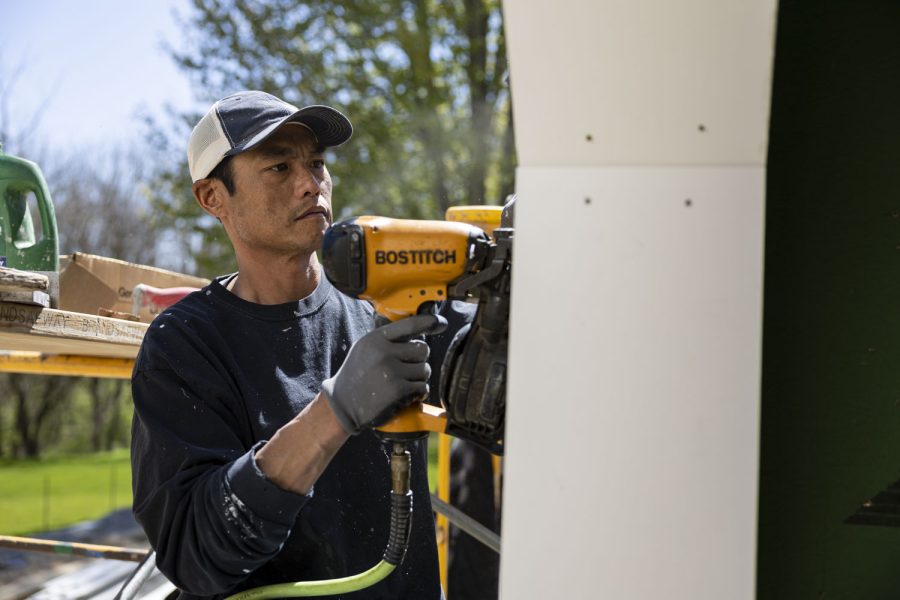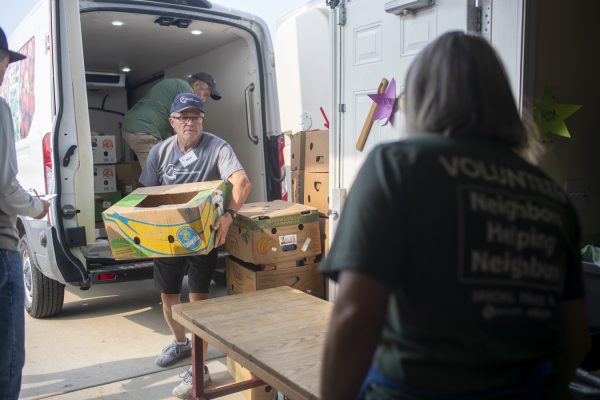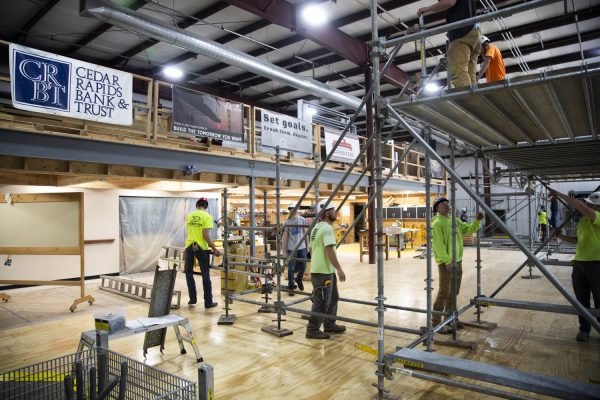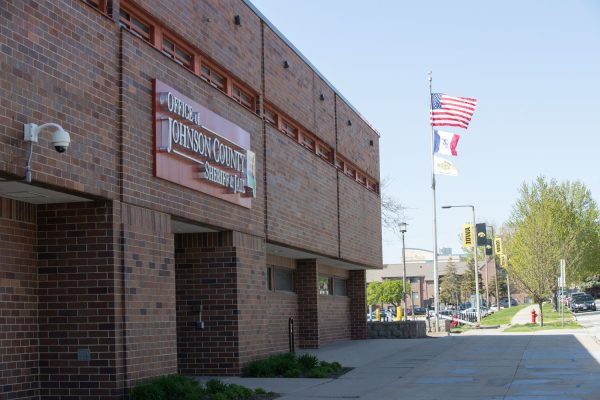IC sees low housing creation, can lead to affordability, environmental issues
City staff recently reported that 2022 continued a recent downward trend in residential lot creation, which means there are less houses being built in the city.
Meticulous Masonry employee Cho Kantaphone uses a nail gun at a construction site in Iowa City on Monday, May 1, 2023. Meticulous Masonry has worked with Martin Construction for 13 years.
May 2, 2023
City of Iowa City staff is concerned that housing affordability and availability will be negatively impacted after noticing a continued downward trend of residential lot creation in 2022.
In the April 13 information packet, Iowa City Associate Planner Kirk Lehmann provided an overview of residential development in 2022, which showed that Iowa City might not be able to house all of its expected future population.
The packet stated that Iowa City’s population is expected to grow by a little over 10,000 by 2030. If the current residential lot creation trend continues, Iowa City would only be able to house less than 6,300 new residents.
Residential lots, which are areas of land that are zoned to allow housing units to be built on them, have been on a noticeable downward trend of creation since 2017, Lehmann wrote in an email to The Daily Iowan.
In a presentation to the city’s Planning and Zoning Commission on April 19, Senior Planner Anne Russett said she anticipated dwelling units for 2022 based on residential lots created totaled 158. This is a decrease from the city’s 10 and 30-year averages for dwelling units, which are 271 and 267, respectively.
For dwelling unit data based on building permits issued to developers, 2022 saw a total of 363 units, which is another significant decrease from past averages. The 10-year average is 534, and the 30-year average is 441.
Lehmann wrote that this is concerning because if there are no lots for houses to be built upon, that means there is less available housing in Iowa City. According to the packet, this can lead to a multitude of other issues, including:
Slowed population growth.
Increased emissions from cars because less available housing means more people will have to live farther away from where they work, forcing them to drive.
A rise in house prices because housing supply would not be able to meet the increased demand from a growing population.
At the April 19 Planning and Zoning meeting, several commissioners said they were concerned by the data. Iowa City Compensation Commission Chair Michael Hensch said the city should look internally and see if there is anything it is doing that could discouragehousing from being built and thus compounding the issue.
“Those houses are getting built; they’re just not getting built in Iowa City,” Hensch said. “There’s probably reasons for that, and what can we do to change that so people actually can live where they work?”
Lehmann wrote there are no clear-cut answers on what has led to this concerning trend. However, he stated some potential contributing factors are population growth being absorbed by surrounding cities, neighborhood opposition to development, a shortage of developers, increased construction costs, rising interest rates, and overall economic uncertainty.
“At the end of the day, it’s probably a little bit of everything,” Lehmann wrote.
Although most of these factors are out of the city’s control, City Manager Geoff Fruin wrote in an email to the DI that the city has employed several strategies to help create conditions where increased housing supply is welcomed.
“This is being done through strategic infrastructure investments, such as roadway and utility extensions. It is also being done through zoning code changes intended to create greater density and promote varying housing options that work for multiple segments of the population,” Fruin wrote.
The packet stated lot creation is typically cyclical, with each cycle lasting around 10 years.
“The City appears to be near the low point of its development cycle, though staff had hoped to see a larger rebound in development trends after last year,” the packet stated. “If past trends hold, development may increase over the next few years to peak around 2026.”
The approval of the creation of several new residential lots is expected in the coming year, so this could also help improve 2023 data, the packet stated.
Accommodating residential growth in empty lots surrounded by other development, known as infill, and in designated growth areas is essential to improving this data as well, the packet stated.
“Accommodating new residential growth is a fundamental aspect of planning for the future of Iowa City,” the packet stated.















